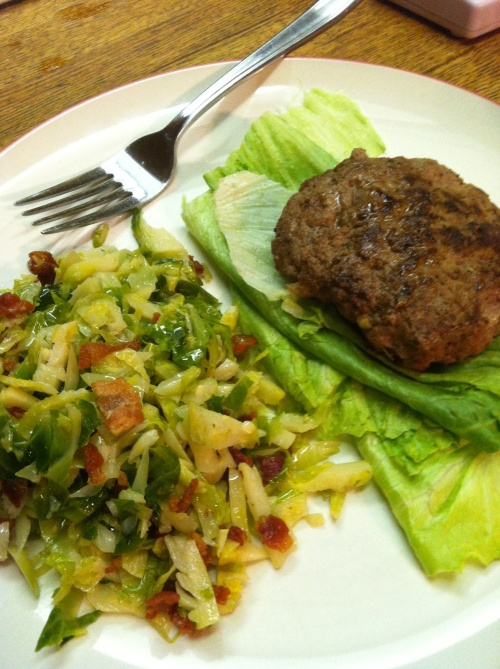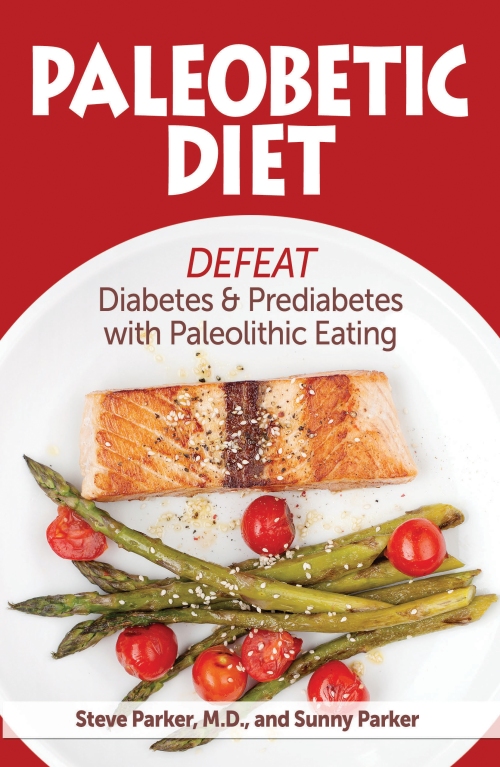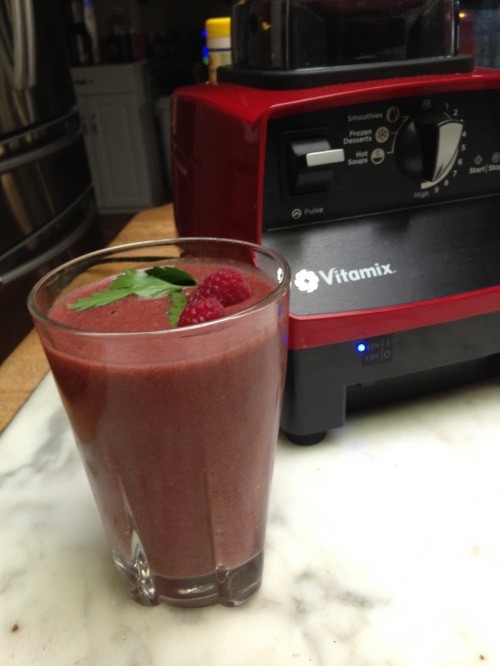
Brian burger and bacon Brussels sprouts
Here’s another meal recipe from my stepson. This makes three servings. You’ll want to make the Bacon Brussels Sprouts to serve with other meals, so I’ve provided an additional nutritional analysis for those alone.
Ingredients:
13 oz (370 g) ground beef, 85% lean
1/2 tbsp (7.5 ml) Tessemae’s All Natural Dressing-Marinade-Dip “Southwest Ranch,” or A1 Steak Sauce or balsamic vinaigrette or AMD vinaigrette (Brian recommends the Tessemae’s Dressing)
1.7 oz (50 g) onion, diced coarse or fine
1 garlic clove, diced
1/8 tsp (0.5 ml) paprika
1–2 pinches of salt (pinch = 1/16 tsp)
pepper to taste (a pinch or 2?)
1/4 tsp (1.2 ml) dried rosemary, crumbled or crushed
1/2 large egg, whisked to blend white and yolk
3 oz (85 g) lettuce
1 lb (450 g) Brussels sprouts (cut and discard bases if desired, probably doesn’t matter), shredded
8 oz (225 g) bacon (6.5 regular (not thick) 8-inch strips), diced
3 tbsp (45 ml) water
1.5 large tomatoes, sliced
4.5 oz pistachio nuts

Prepping the bacon; use a sharp knife
Instructions:
First cook the bacon in a pan over medium–high heat until done. Don’t discard the grease.
Next do your Brussels sprouts prep (shredding). It will take a few minutes to shred it with a knife. Set those aside.

Brian slaving away. Thanks, dude!
Start on the burgers now. Place the ground beef in a bowl then add your chosen sauce or vinaigrette, onion, egg, garlic, paprika, rosemary, salt, and pepper. Mix thoroughly by hand. Divide the mess into three patties of equal size. Fry or grill over medium heat until done, about 10 minutes.

Steaming in progress
As soon as the burgers are plopped on the heat, start steaming the shredded sprouts thusly. Take a pan with a lid, add 3 tbsp (45 ml) of the bacon grease and the 3 tbsp of water, then heat that up for a minute or two over medium to high heat. Then throw in the shredded sprouts, salt and pepper to taste (probably unnecessary), and cover with a lid. Immediately reduce heat to medium and cook for 4–6 minutes. The sprouts will soften up as they cook. Gently shake the pot every minute while steaming to prevent contents from sticking to the pan. If necessary, remove the lid and stir while cooking, but this may increase your cooking time since you release hot steam whenever you remove the lid. When the sprouts are done, remove from heat and add the remaining bacon and bacon grease, then blend.

Bacon has been added and blended in after the sprouts are cooked
Serve the burger on a bed of lettuce (1 0z). Enjoy tomato and pistachios on the side. Serving sizes are below.
Number of Servings: 3 (one burger patty, 1 oz (30 g) lettuce, 1 cup (240 ml) of sprouts, 1/2 tomato or a third of all the slices, 1.5 oz (40 g) pistachio nuts)
Nutritional Analysis per Serving:
58% fat
17% carbohydrate
25% protein
740 calories
32 g carbohydrate
12 g fiber
20 g digestible carbohydrate
827 mg sodium
1,802 mg potassium
Prominent features: Rich in fiber, protein, vitamin B6, B12, C, copper, iron, manganese, niacin, pantothenic acid, phosphorus, riboflavin, selenium, thiamine, and zinc.
Nutritional Analysis for Bacon Brussels Sprouts: (1 cup, no added salt):
47% fat
28% carbohydrate
26% protein
180 calories
14 g carbohydrate
6 g fiber
8 g digestible carbohydrate
530 mg sodium
709 mg potassium
Prominent features: mucho vitamin C.

Brian likes his burger wrapped in 2 oz of lettuce























